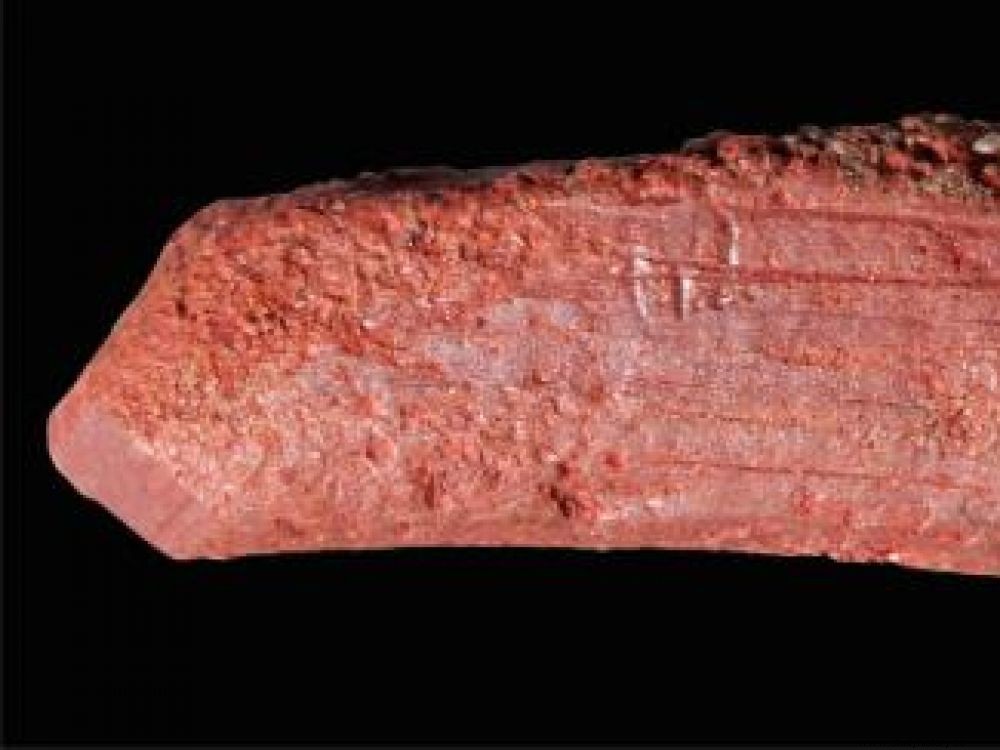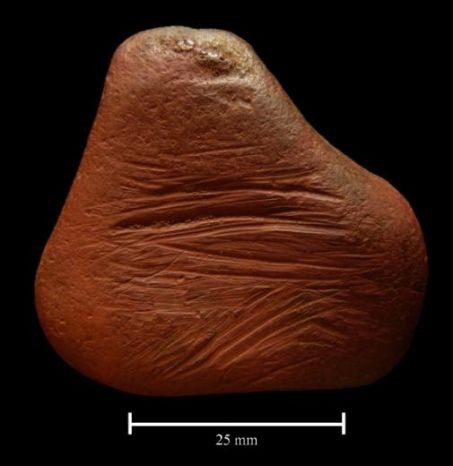This small piece of carved ocher would have been used as a pencil more than 10,000 years ago.

This carved ocher pebble could be one of the very first pencils used by a human.
It was near the town of Scarborough, in the north-west of England that archaeologists from the University of York discovered, on a site known for its prehistoric remains, this small piece of red ocher of 22 mm long by 7 wide. It was dug up near an ancient peat-covered lake and immediately caught the attention of specialists. They see it as one of the very first pencils in history! It is true that its shape (a little coarse) is strongly reminiscent of this instrument and even more one of its faceted ends "which was rounded at the start and which has become extremely sharp suggesting that it has been used " underlines Andy Needham of the Department of Archeology at the University of York, in a press release. According to the researcher, this pencil could have been used a little more than 10,000 years ago to color or adorn animal skins. In In the same area but at a site on the other side of the lake, the researchers also found a large pebble, still ocher, with a heavily streaked surface, which was probably scraped to extract ocher powder .

This ocher pebble was scraped to collect red powder. Credit: Paul Shields / University of York
Ocher is an important mineral pigment used by prehistoric hunter-gatherers around the world. The latest findings suggest that humans collected ocher and processed it in different ways during the Mesolithic period, between 10,000 and 5,000 BCE. Ocher is a rock composed of clay which can be red when it contains a pigment of mineral origin, hematite.
